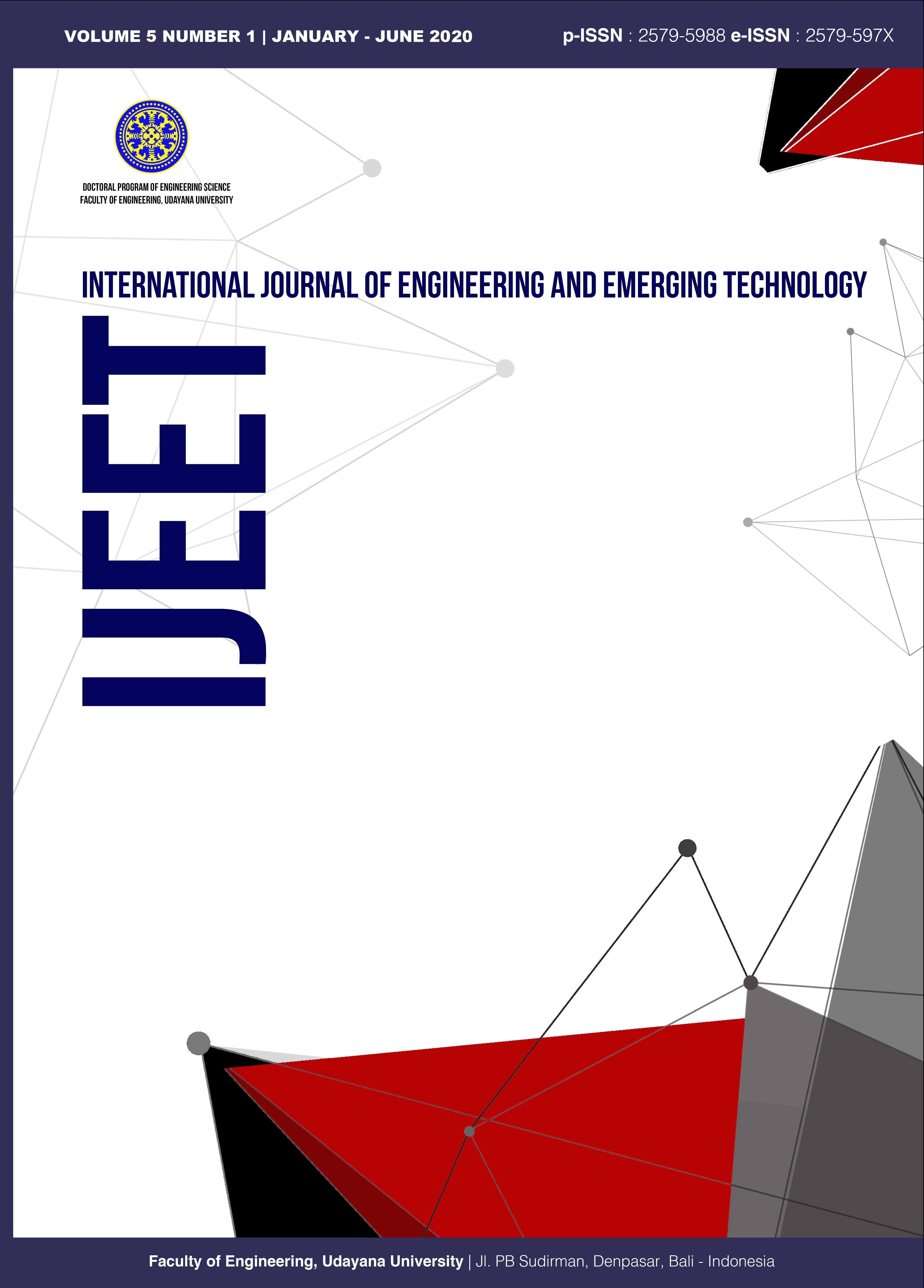The Hardness Analysis of Epoxy Composite Reinforced with Glass Fiber Compared to Nettle Fibers
Abstract
The purpose of this study is to compare the hardness of glass fiber reinforced composite materials with the hardness of netted fiber-reinforced composite materials. Glass fiber is a commercial fiber that has been used in various industries while nettle fiber is a natural fiber that is more environmentally friendly. Composite material has several advantages, namely the form that can be adjusted, high strength, lightweight and resistant to corrosion. Nettle plants are plants that have strong fibers in the bark. In this study, nettle composites were made with variations in the weight fractions of 10%, 15%, and 20%. Hardness testing used the Shore D Durometer. The results of the hardness value of glass fiber composites with weight fractions of 10%, 15%, and 20% are 82.4 Shore D, 84.5 Shore D, and 86.5 Shore D, show an increase in stable hardness because the glass fiber factor is already commercial, the fiber strength is evenly distributed. The hardness values of nettle fiber composites with fractions of 10%, 15%, and 20% are 81.6 Shore D, 85 Shore D, and 86.6 Shore D, the hardness value of each nettle composite increases with the addition of fiber weight fraction but is unstable due to the strength factor of each nettle single fiber uneven. Furthermore, with the right treatment, nettle fiber can replace glass fiber.
Downloads
References
[1] A. V Singhal et al., “Critical Parameters Affecting Mechanical Behavior of Natural Fiber Reinforced Plastics,” J. Nat. Fibers, vol. 13, no. 6, pp. 640–650, 2016.
[2] E. Bodros and C. Baley, “Study of the tensile properties of stinging nettle fibres (Urtica dioica),” Mater. Lett., vol. 62, no. 14, pp. 2143–2145, 2008.
[3] D. Ngakan, K. Putra, T. Gde, T. Nindhia, I. W. Surata, and M. Sucipta, “Potensi bambu swat (gigantochloa verticillata) sebagai material karbon aktif untuk adsorbed natural gas (ANG),” J. Energi Dan Manufaktur, vol. 9, no. 2, pp. 174–179, 2017. (in Indonesia)
[4] I. G. P. A. Suryawan, N. P. G. Suardana, I. N. S. Winaya, I. W. B. Suyasa, and I. P. Lokantara, “Study of stinging nettle fibers as a reinforcing of composite materials based on its growing region,” in IOP Conference Series: Materials Science and Engineering, 2019.
[5] L. Bacci, S. Baronti, S. Predieri, and N. di Virgilio, “Fiber yield and quality of fiber nettle (Urtica dioica L.) cultivated in Italy,” Ind. Crops Prod., vol. 29, no. 2–3, pp. 480–484, 2009.
[6] I. G. P. A. Suryawan, N. Suardana, I. K. Suarsana, I. P. Lokantara, and I. K. J. Lagawa, “Kekuatan Tarik dan Lentur pada Material Komposit Berpenguat Serat Jelatang,” J. Energi Dan Manufaktur, vol. 12, no. 1, pp. 7–12, 2019.(in Indonesia)
[7] I. G. P. A. Suryawan, N. P. G. Suardana, I. N. S. Winaya, and I. W. B. Suyasa, “A Study on Correlation Between Hardness and Thermal Conductivity of Polymer composites reinforced,” Int. J. Civ. Eng. Technol., vol. 11, no. 1, pp. 94–104, 2020.
[8] Khalidi, Faten Rashid Al and M. A. Rajab, “Hardness And Wear Resistance Of Composite Materials Supported By Graphite And Silica Particles And Reinforced By Cuffler Fiber,” Am. J. Eng. Res., vol. 7, no. 11, pp. 317–322, 2018.
[9] A. Kasim, A.N. Selamat, M.Z. Daud, M.A.M. Yaakob, M.Y. Putra and D. Sivakumar, “Mechanical properties of polypropylene composites reinforced with alkaline treated pineapple leaf fibre from Josapine cultivar,” Int. J. Automot. Mech. Eng., vol. 13, no. 1, pp. 3157–3167, 2016.
[10] O. L. Vasdazara, H. Ardhyananta, and S. T. Wicaksono, “Pengaruh Penambahan Serat Cangkang Kelapa Sawit (Palm Kernel Fiber) Terhadap Sifat Mekanik Dan Stabilitas Termal Komposit Epoksi/Serat Cangkang Kelapa Sawit,” J. Tek. ITS, vol. 7, no. 1, 2018. (in Indonesia)

 Indexed By
Indexed By







